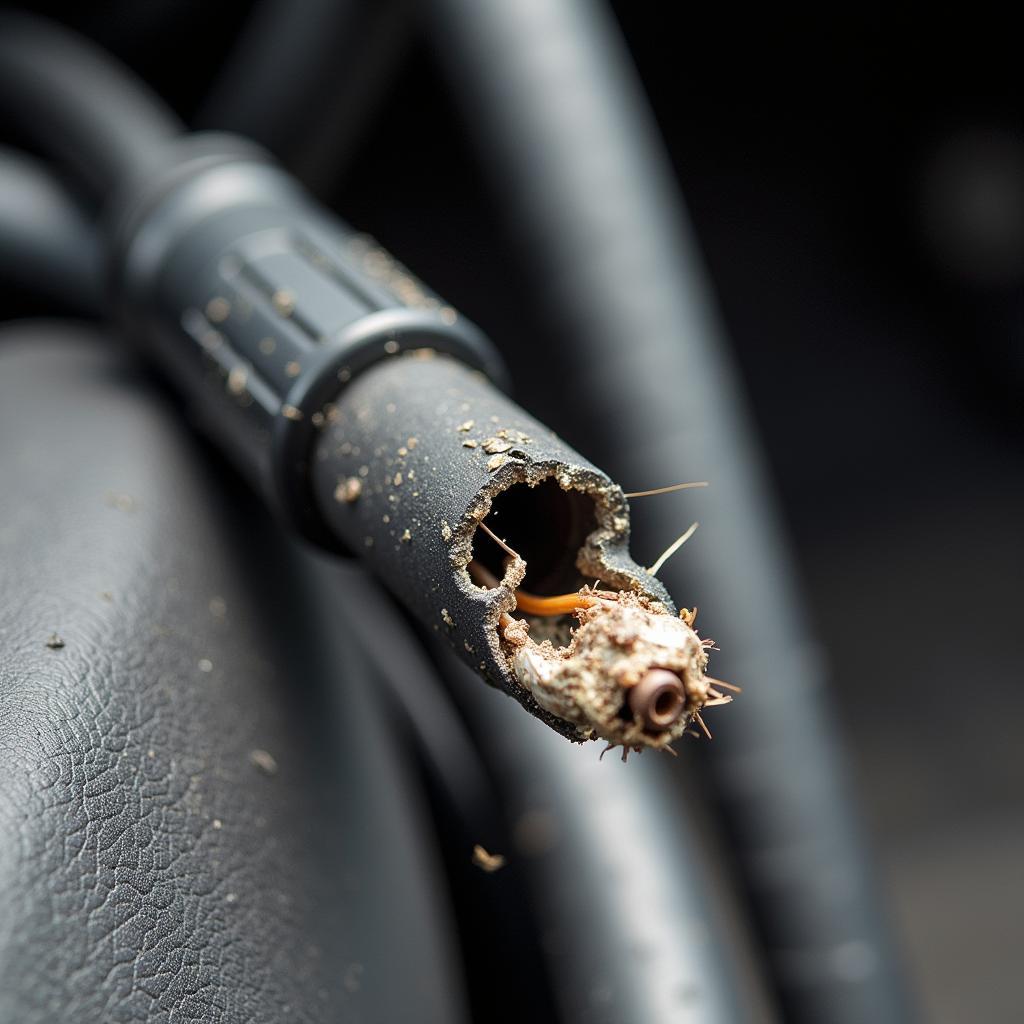Hitting the 100,000-mile mark on your car is a significant milestone. It signifies years of reliable service, but also marks a shift in your maintenance approach. Proper 100k Miles Car Maintenance ensures your vehicle continues running smoothly and avoids costly repairs down the line. This guide provides a comprehensive overview of essential maintenance tasks for vehicles approaching or exceeding this mileage.
Maintaining your car after it hits 100,000 miles isn’t about simply changing the oil more frequently. It’s about a more proactive and in-depth approach to address wear and tear on crucial components. For more information, check out car maintenance over 100k miles.
Essential 100k Miles Car Maintenance Tasks
Reaching this milestone means some components are nearing the end of their lifespan. Let’s explore the key areas requiring attention.
Timing Belt Replacement
The timing belt is critical for engine operation. Its failure can lead to catastrophic engine damage. Most manufacturers recommend replacement between 60,000 and 105,000 miles. Check your owner’s manual for specific recommendations.
Water Pump Inspection
Often replaced alongside the timing belt, the water pump circulates coolant to prevent engine overheating. Inspecting or replacing it during 100k miles car maintenance can save you from future headaches.
Transmission Service
Whether automatic or manual, your transmission deserves attention at this mileage. A fluid flush and filter replacement can extend its life significantly.
Spark Plugs and Ignition System
Worn spark plugs can reduce fuel efficiency and engine performance. Consider replacing them as part of your 100k miles car maintenance. Also, inspect the ignition coils and wires for wear and tear.
Suspension System Check
Over time, suspension components wear down, affecting handling and ride comfort. Have a mechanic inspect the shocks, struts, and bushings for wear and tear. Replacement might be necessary for optimal performance and safety.
Brake System Inspection
Thoroughly inspect brake pads, rotors, calipers, and brake lines. Replace worn components to maintain safe stopping power. Brake fluid should also be flushed and replaced.
“Regular brake inspections are crucial, especially after 100,000 miles,” advises John Davis, Senior Automotive Technician at Advanced Auto Solutions. “Neglecting your brakes can compromise safety and lead to expensive repairs.”
Cooling System Flush
A coolant flush removes rust and deposits, protecting the cooling system from corrosion. This is especially important as your vehicle ages.
Fuel System Cleaning
Clean fuel injectors and filters contribute to efficient fuel combustion and better engine performance. Consider a fuel system cleaning as part of your maintenance routine.
Differential Service
If your vehicle has a rear or all-wheel drive, the differential fluid should be changed. This often-overlooked service can prevent costly repairs down the line.
Beyond the Basics: Additional Considerations
While the above tasks cover the essential 100k miles car maintenance, additional considerations can further enhance your car’s longevity.
Drive Belts Inspection
Inspect drive belts for cracks or fraying. Replace them if necessary to prevent failures that can disable your vehicle.
Battery Check
As batteries age, their performance degrades. Have your battery tested and replaced if necessary.
“A failing battery can leave you stranded,” warns Maria Sanchez, Lead Mechanic at Auto Experts Inc. “Regular testing and timely replacement are vital for peace of mind.”
You can find out more about the cost for 100k car maintenance acura tl 2016.
Conclusion
Reaching 100,000 miles is a testament to your vehicle’s reliability. By adhering to a comprehensive 100k miles car maintenance schedule, you can ensure many more miles of trouble-free driving. Remember to consult your owner’s manual for specific recommendations for your vehicle make and model. For expert advice and assistance, contact AutoTipPro at +1 (641) 206-8880 or visit our office at 500 N St Mary’s St, San Antonio, TX 78205, United States.







Leave a Reply